Discussing Writing, the Speculative, and Horror University: An Interview with Linda D. Addison
- By Jonathan Martínez
- Jun 24, 2016
- 8 min read
Last month, the Horror Writers Association (HWA) held the first—of many to come—annual StokerCon™ convention. According to the official StokerCon™ 2016 website, the HWA also offered Horror University, a series of workshops and presentations facilitated by “the best and brightest in the horror field” in an effort to emphasize education. The BSADA was fortunate enough to interview one of this year’s presenters: Linda Addison.
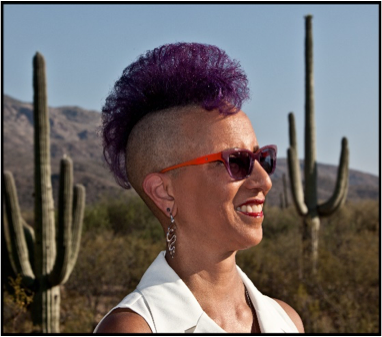
Linda Addison is a poet and writer of horror, science fiction, and fantasy. Currently residing in Arizona, she has published four collections of poetry and short stories: How to Recognize a Demon Has Become Your Friend (2011) Being Full of Light, Insubstantial (2007), Consumed, Reduced to Beautiful Grey Ashes (2001), and Animated Objects (1997). Ms. Addison has also published over 300 poems, stories, and articles with her work appearing in such publications as Essence Magazine and Asimov’s Science Fiction. Ms. Addison is a founding member of the writer’s group, Circles in the Hair (1990) and is the poetry editor for Space & Time Magazine. In addition to being a member of HWA, she also holds membership with the Science Fiction Poetry Association (SFPA) and Science Fiction & Fantasy Writers of America.
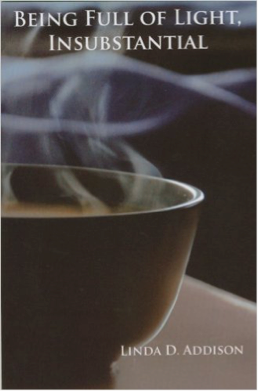
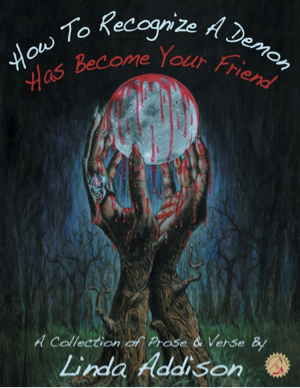
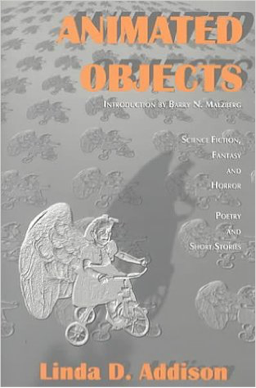
In 2001, she became the first African-American to win the HWA Bram Stoker award® award for superior achievement in poetry for Consumed, Reduced to Beautiful Grey Ashes. She has since won the award three additional times. For more information about Linda, such as her full bibliography and schedule of events, please visit her website at http://www.lindaaddisonpoet.com.

Now for what we've all been waiting for, a special Q&A with Linda Addison.
Linda Addison Q&A:
BSADA: How long have you been involved and/or attended StokerCon™? Do you have any insights into how Horror University came to be?
LA: This was the first year for the Horror Writers Association (HWA) event named StokerCon. In the past, the HWA Bram Stoker award® event was part of World Horror Convention (WHC) or separate as the HWA Bram Stoker Award Weekend. I’ve attended ten annual events (some as WHC and others as the separate Award weekend), and I’ve been an active member of the HWA for about sixteen years.
My understanding is that HWA wanted to establish the concept of Horror University to support its focus on education. I believe a big part of its creation was to allow experienced members to share their knowledge through workshops and presentations. The Workshops were two-hour classes (for a small fee), while the Special Presentations were one-hour courses (free). This was a good move since myself and others attend writing conferences to absorb new ideas and concepts.
BSADA: How did you become involved with Horror University?
LA: I submitted a workshop proposal when Horror University was first announced. The obvious choice was to teach how to write poetry since I have won four HWA Bram Stoker awards® in Poetry, but I wanted to do something a little different since I also write fiction. It’s important to incorporate some poetic style in my fiction, so I wanted to share how that can be done with others. My proposal was accepted for a workshop, open to poetry and fiction writers, called “Poetic Forms: The Scary World of Structured Poetry.”
BSADA: According to the Horror University webpage, you were one of many who facilitated workshops described as “hands-on” and “intensive” So, it sounds like participants had opportunities to be really involved. Can you tell me a bit about your workshop? What kind of activities did people have a chance to experience?
LA: I learn best by doing so I had attendees, who were a mix of poetry and/or fiction authors, writing a lot. The first thing they did was create a half to full page of Writing Seeds. The idea is to keep your hand moving, writing whatever words come to mind, and it doesn't matter if they are sentences or lists. They could then use the results as inspiration in the exercises during the rest of the workshop.
Of the three exercises we did, two involved poetry forms (haiku, and fibonacci sequence). I explained each form with examples and had them create their own poems using the Writing Seeds (unless they were inspired to write something else).
The third exercise was to write a few sentences of fiction and turn it into a poem by removing/changing words, adding line breaks and indents. I wanted them to experience how compressing sentences into a poetry form can help identify the strongest images/concepts. This exercise can be used when writing fiction to add interesting language and rhythms. This is a way to get unstuck when writing or add the music and tightness of poetry to fiction.
BSADA: How did people react to your workshop? One thing I found interesting was your workshop focused on poetry. I assume for some thoughts of a novel or film pop into mind first when thinking of horror. How do you feel poetry work as a genre for horror?
LA: The people in the workshop were all very engaged in the exercises. I gave each person a chance to read their final work out loud. I was deeply touched and impressed by their poems. There was a final sheet in the handout for feedback and all the comments were excellent. In fact, a couple of them said they wished the workshop was longer than two hours.
Poetry works extremely well in the area of horror. For the most part, I prefer writing psychological horror as opposed to blood-guts horror. Horror writing (fiction or poetry), in general, does more than invoke general fear, it also reflects the shadow side of life: death, loss, madness, revenge, and despair. Haunting, sad poems have been written by well-known authors like Edgar Allan Poe, Charles Bukowski, Charles Baudelaire, Gwendolyn Brooks, and Sylvia Plath.
BSADA: Did you get a chance to participate in any workshops yourself? What did you experience at Horror University?
LA: Unfortunately, I didn’t have time to attend any other workshops because of the panels I was on and preparing for my workshop. There were many I would have chosen. One I was interested in was The Master Plotting Crash Course with John Skipp. I love the idea of learning a new way to storyboard a novel since I’ve just started on the road of writing novels.
BSADA: Why do you think there is a need for something like Horror University for writers in your field? How successful do you think Horror University was this year?
LA: It’s important to share lessons learned regardless of the area. Early in my writing career, I consumed books and magazine articles written by experienced authors about the process and marketing. I was hungry to find ways to make my writing better and understand how to get in print.
Writing is done in a room, by yourself. Writing conventions are very popular because they are a good way to be with other writers, share ideas, get suggestions on approach and growth.
All signs show Horror University was a success. Sharing knowledge increases knowledge for both parties. I was invigorated by conducting my workshop. The feedback I received from my attendees and what people said in the general meeting at the end of the convention about the workshops and presentations were all positive with suggestions of how to make the 2017 StokerCon better.
BSADA: Because this interview will be part of the Black Speculative Arts Digital Archive, I want to get your take on the idea of speculative. So, what does “speculative arts” mean to you? How do you see your work fulfilling that idea?
LA: For me, speculative arts means asking the eternal What if question and fully engaging the imagination for possible answers. In writing, it encompasses areas like science-fiction, fantasy, horror, and alternate history.
I have been a big day-dreamer my whole life, seeing things outside the perceived reality. I’m currently writing work that is extrapolating on concepts of space, time, multi-dimensions and artificial intelligence. I have a strong math/science background and enjoy reading what’s being researched. It fuels my imagination so that I start to play with what would happen one hundred, one thousand, ten thousand years from now.
When I approach a project, it’s important to try to create something fresh. For example, my piece in Dark Thirst (Pocket Book); reprinted in New Blood (Padwolf) titled “Whispers During Still Moments” is a different take on vampires. I had been reading about using sound/tuning forks to heal (biosonics) and decided to use the idea of sound influencing blood and vampires. The story got good reviews and is something I’d like to expand into a novel one of these days. I leave it to the reader to decide if the work I’ve published fulfill the idea of speculative art.
BSADA: I like to think most people would agree that writing goes hand-in-hand with reading. What are you currently reading?
LA: I’m tackling writing a novel, which is a different and challenging form so I’ve collected a tall stack of books to be read, the list is too long to put here. Some books I’ve jumped into are Ghost Summer Stories by Tananarive Due, The Fifth Season by N. K. Jemisin, The Monster, the Bad and the Ugly and Other Stories by Alessandro Manzetti & Paolo Di Orazio, Who Wants to be The Prince of Darkness? by Michael Boatman, Sci-Fi Streetz: The Book of Hip Hop Sci-fi Stories by Jeff Carroll, The Darkside Trilogy by Willian Hayashi, and Bad Dog by Tom Piccirilli.



I’m also reading anthologies: Stories for Chip, A Tribute to Samuel R. Delany (editors Nisi Shawl & Bill Campbell), The Best Horror of the Year, Vol. 8 (editor Ellen Datlow), and Scary Out There (editor Jonathan Mayberry); more about this anthology and the New Horror Anthology here.
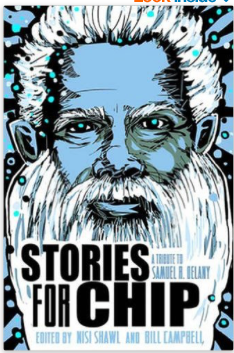
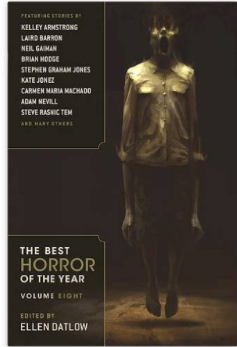
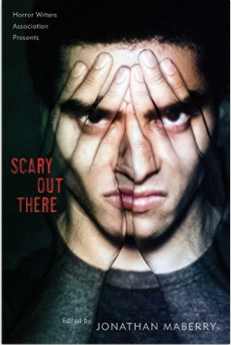
BSADA: What advice do you have for the burgeoning writer who wants to dabble in speculative forms?
LA: Find an area that you’re drawn to, whether it’s science, social reform, botany, etc. and find out what’s happening on the cutting edge. I do a lot of research online.
Then daydream what the next steps are, how problems will be solved or created; don’t feel constrained by what is. Allow your imagination to go as wild as it wants. My writing is very character driven so my first drafts tangle the wants and needs of characters into whatever new thing I’ve made.
It’s in rewrite where you build meaning around that different concept and its impact on the story and characters to draw the reader in. People read to see what happens to characters, to see how a story unwinds. A cool concept, by itself, is not enough. No matter how outrageous your idea or world is, it’s the writer’s job to keep the reader engaged and not asking questions about how this can be; as soon as that happens you’ve lost the reader.
BSADA: Finally, I want to give our readers a chance to discover more of your work. What upcoming events do you have planned in the upcoming months?
LA: Folks can always check the EVENTS Section on my site (www.lindaaddisonpoet.com) for updates. I have two writing events scheduled for the rest of this year:
July 21 to 24: I’ll be at NECON (http://campnecon.com), Northeastern Writers Conference, in Providence, RI. I’m one of two guests that will be honored as a Necon Legend.
November 11 to 13: TusCon (http://www.tusconscificon.com/index.shtml) in Tucson AZ.
Thank you Ms. Addison for taking the time to provide readers and the speculative arts community your insights and expertise on the craft of writing and your experiences at Horror University.

















Comments